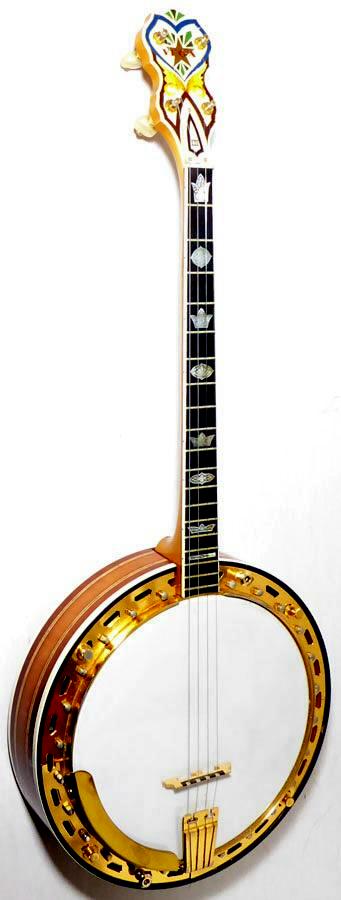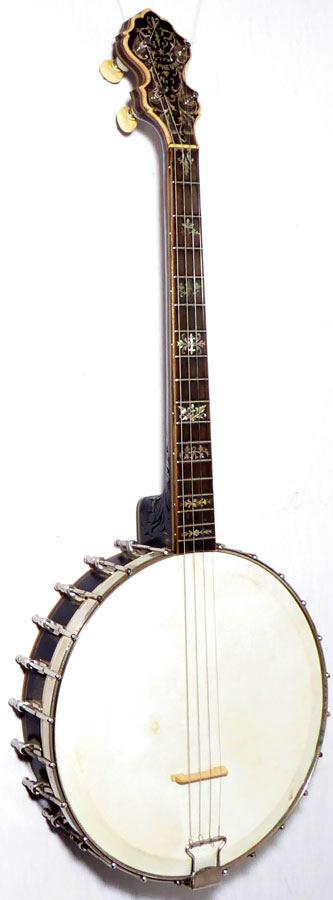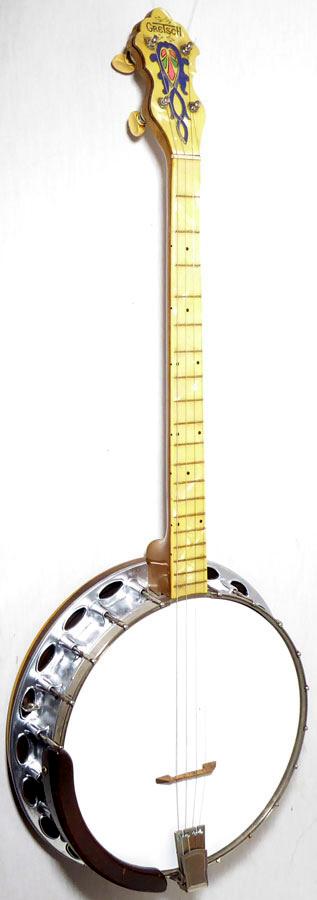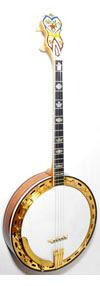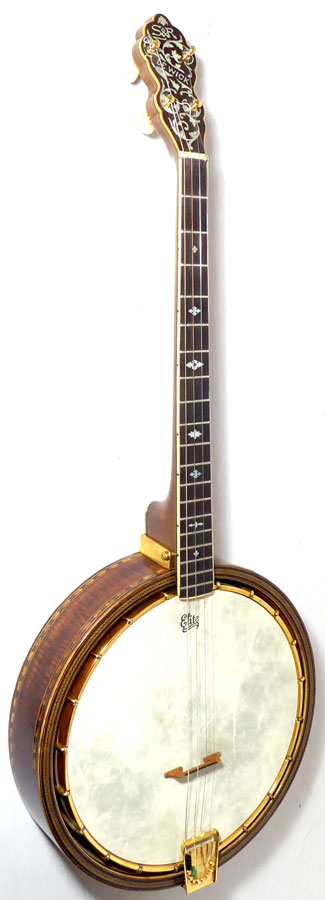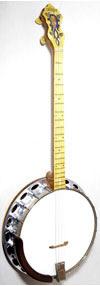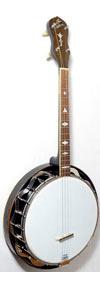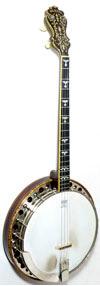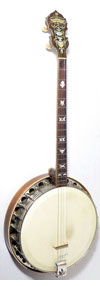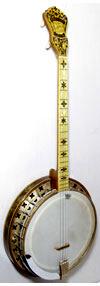Tenor banjos part two: American Jazz Age |
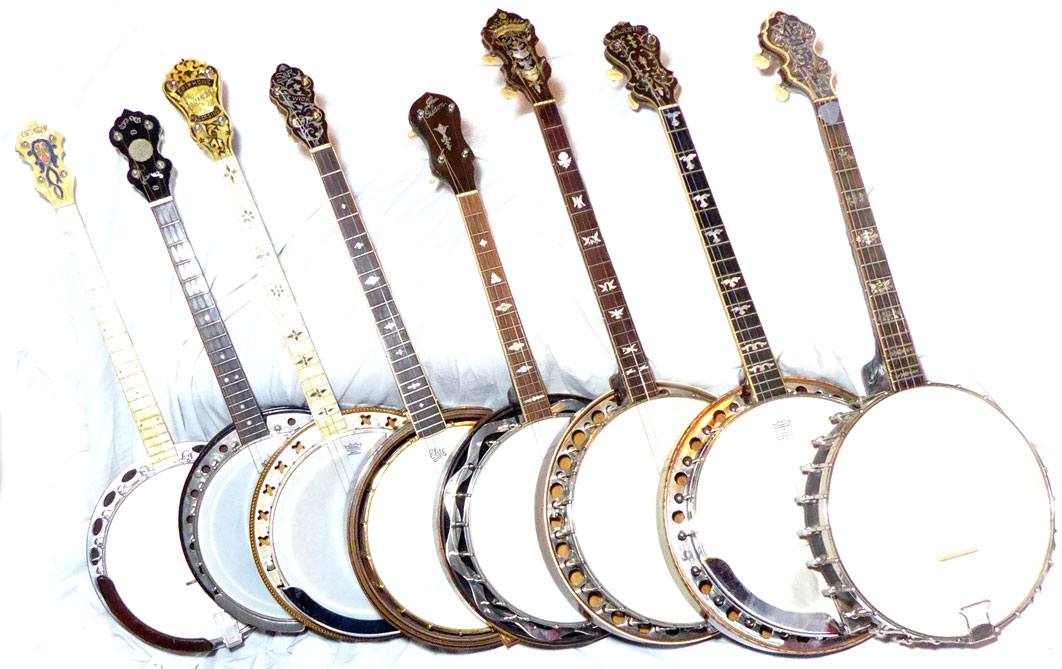 |
  |
||||||||||||||||||||||||||||||||||||||||||||||||||||||||||||||||||||||||||||||||||||||
| Tenor banjos from the golden age of jazz. The 1920s saw the 4 string tenor banjos rise in popularity. Developed from the four string banjolin (mandolin tuning) or Tango banjo. Popularity of the five string banjo declined with the first tenors appearing in greater numbers from about 1915. Tenor banjo became more and more ornate to compete with rival makes. By 1935 music tastes changed, the guitar was taking over in dance bands. Banjo players took to tenor guitars which were tuned the same as the banjos. |
||||||||||||||||||||||||||||||||||||||||||||||||||||||||||||||||||||||||||||||||||||||||
|
||||||||||||||||||||||||||||||||||||||||||||||||||||||||||||||||||||||||||||||||||||||||
See also:- |
||||||||||||||||||||||||||||||||||||||||||||||||||||||||||||||||||||||||||||||||||||||||
Hardanger Fiddles Pochette and kit violins Metal violins Decorated violins Unusual violas Fakes Mute violins Early violins |
||||||||||||||||||||||||||||||||||||||||||||||||||||||||||||||||||||||||||||||||||||||||
|
||||||||||||||||||||||||||||||||||||||||||||||||||||||||||||||||||||||||||||||||||||||||
